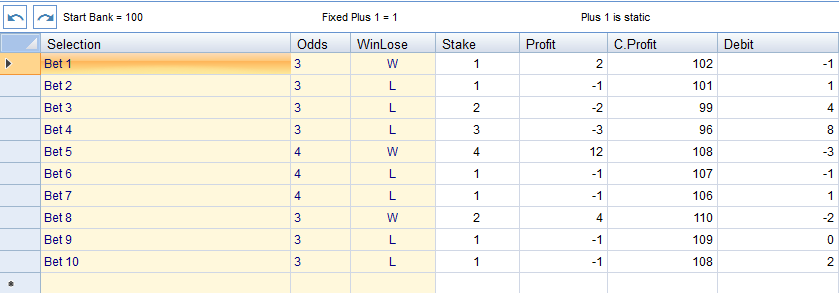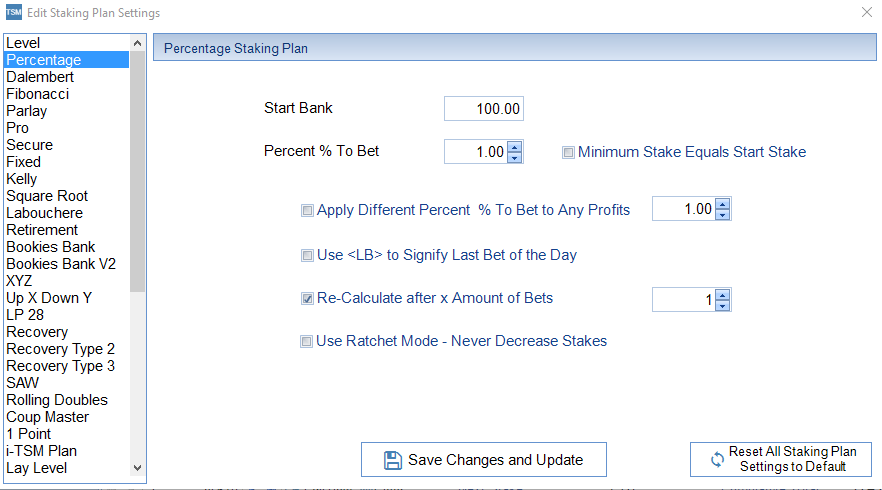Pro Staking Plan
The staking plan you choose is an extremely important part of the quest to create a winning betting strategy. As we all know, bad luck and variation can lead to bankruptcy even if you are really good at finding valuable wagers. This means that bankroll management is the key to success for every bettor out there. Pro Staking Plan The Pro Staking Plan relies on the instructions being followed to the letter. Which is a good reason to use The Staking Machine! The aim of the plan is to achieve a target profit.
- Pro Staking Plans
- What Is The Best Staking Plan
- Pro Staking Plant
- Lay Pro 88 Staking Plan
- Pro Staking Plants
The staking plan you choose is an extremely important part of the quest to create a winning betting strategy. As we all know, bad luck and variation can lead to bankruptcy even if you are really good at finding valuable wagers. This means that bankroll management is the key to success for every bettor out there. It provides protection against bad streaks and it’s a tool to maximize your profits.
One of the main fundamentals of successful capital management is to determine if you are going to use the same bet size each time or try variable stakes. Both approaches have their strengths and weaknesses so neither is universally better. It highly depends on your general strategy, the way you discover value and select your bets. I will try to summarize the pros and cons of each option and give you some examples where one of them is better than the other.
Before that, I would like to remind you the following: consider your bet size as a percentage of your bankroll, not as a fixed amount. It doesn’t matter if you choose flat or variable stakes, always adjust the size to your overall money. Most pros recommend placing max 3-5% on a single wager. If you can reload at any given moment, you can bet more, but it is probably not the best idea.

Going for Flat Stakes
Lots of tipsters use this approach and place exactly the same amount each time. It certainly has its advantages and one of them is its predictability. It is generally a solid way to see how you are doing as it leaves no room for error such as placing more on a losing bet that wipes out your hard-earned winnings.


However, it can lead to less flexibility and missed opportunities. You should use this approach if most of your betting picks have a similar value expectation and price. This is usually valid for people who rely predominantly on stats and formulas to select their matches.
Let’s say you found some kind of system based on previous results that works in the following way: you put some stats in an Excel formula and it shows you that the Asian Handicap line for a certain game contains value. Most of the time you will be placing your money on odds of about 2.00 and with similar value expectations. This is a textbook case of a strategy that thrives on flat staking.
Going for Variable Stakes
The other way to go is to place different stakes on your bets. Usually, this means using a 5 or 10 units system where the difference between your wagers could reach 10 times. As you would expect, this requires very clear criteria, lots of experience and good reasoning. Simply put – it is more rewarding than flat staking, but also much harder to manage successfully.
The main two factors you should consider are the expected value of your bet and the win probability. As you can assume, the higher the value and the probability, the bigger the stake should be. The most popular staking strategies are based on that logic. The best example is the so-called Kelly Criterion, but there are others as well.
However, determining the value correctly might be an issue and here is where the key moment lies. If you can evaluate your mathematical expectation correctly, you should use variable stakes as it increases your winnings by placing more money on more profitable picks. If you can’t though, the effect could be exactly the opposite.
The probability part is rather straight forward as the odds of a certain event are a good indicator in this regard. You don’t want to risk large chunks of your bankroll on stuff that have like 10-15% chance of happening even if the odds contain great value. If you are unlucky for a while, you can easily lose lots of money doing so.
Conclusion
The general conclusion is that the flat stakes plan is for more straightforward strategies and inexperienced players as it provides a stable and disciplined approach. It is also the best way to test if a certain new strategy is profitable in the long run as variable stakes might skew the real results if you get lucky.
When you feel confident enough with your general betting system, you could try and experiment with variable stakes. See If you can improve your profits by recognizing your best picks and risking more on them.
Whatever you decide, don’t forget that discipline is essential for success. It wouldn’t matter what stakes you’re using if you get angry after losing 2-3 picks in a row and place half of your bankroll in a desperate attempt to make it up, would it?
Please download the spreadsheet to your own computer.Please only input into the orange columns
A - Date
B - decimal odds
D - result 1 for a win and 2 for a loss Column
Pro Staking Plans
The blue columnWhat Is The Best Staking Plan
 will automatically alert you to your stake for the next bet.
will automatically alert you to your stake for the next bet.Pro Staking Plant
Do not touch any other columns otherwise you will interfere with the formulas.The information in line 1 can, of course, be over -written.

Lay Pro 88 Staking Plan
This staking plan is unique to the 2 horse race placers. It has profited since 2013 when used in tandem with 2 horse race placer selections , as long as their odds are between 1.1 and 1.5 decimal odds.